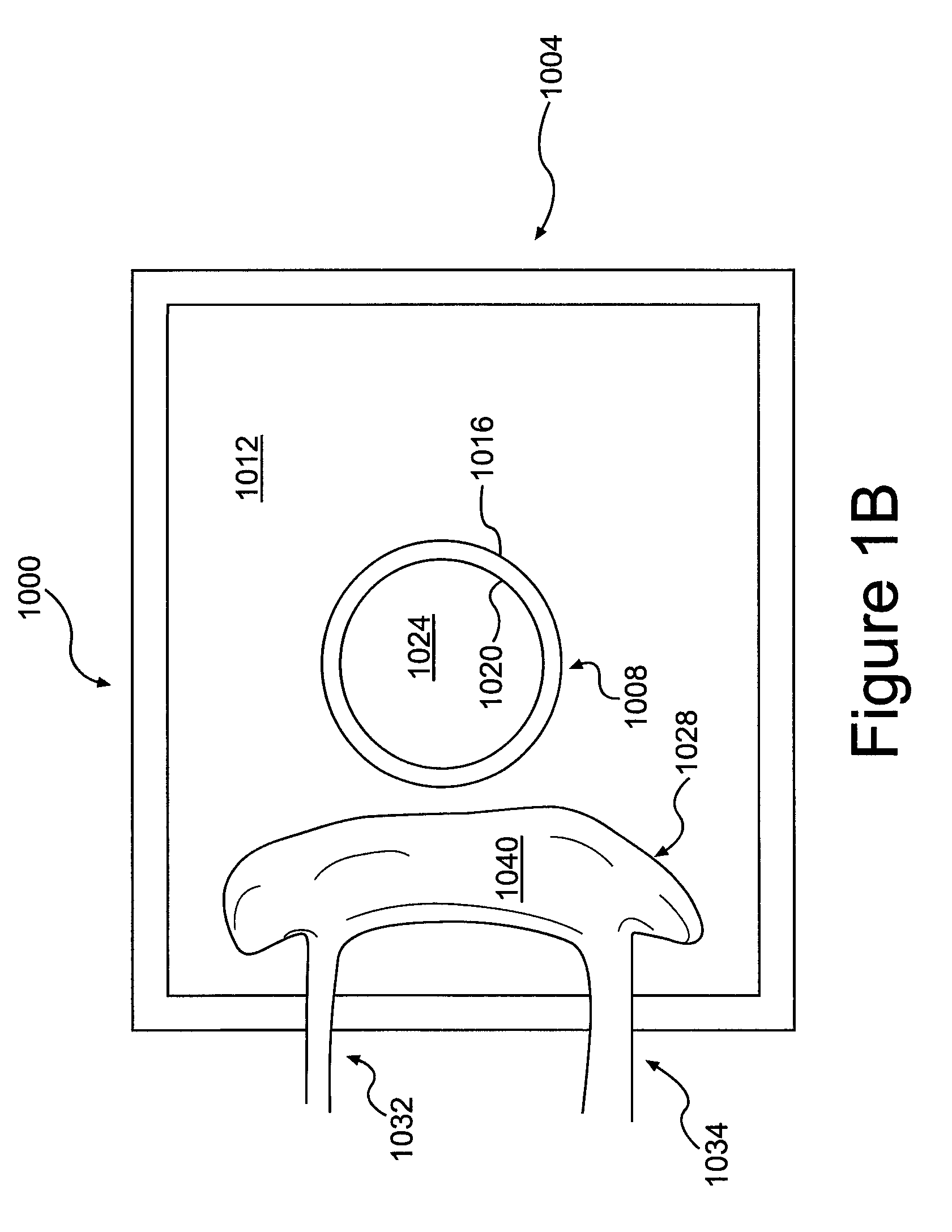Thermal cycler for PCR including temperature control bladder
a cycler and temperature control technology, applied in indirect heat exchangers, biomass after-treatment, lighting and heating apparatus, etc., can solve the problems of reducing the efficiency of the pcr process, reducing the efficiency of the cycle pcr process, and increasing the rate of heating and cooling
- Summary
- Abstract
- Description
- Claims
- Application Information
AI Technical Summary
Problems solved by technology
Method used
Image
Examples
Embodiment Construction
[0031]In a first aspect, the present invention provides a device for controlling the temperature of a defined volume. In one embodiment, the defined volume is a reaction chamber configured for holding chemical reactants and performing a chemical reaction therein at controlled temperatures. In a more particular one embodiment, shown in FIG. 1A (1000), the device provided by the invention includes a housing (1004). The housing can be constructed from materials and designs well known to persons having ordinary skill in the art. Examples of such materials include, without limitation, plastics, metals, ceramics, composites, and the like. Examples of housing embodiments include those in which the housing is of lightweight construction (e.g., thin plastic), hermetically sealed (e.g., for containing harmful substances, such as hazardous chemical and biological substances), or capable of holding a vacuum in the interior space. Thus, in some embodiments, the housing includes means for reducin...
PUM
| Property | Measurement | Unit |
|---|---|---|
| temperatures | aaaaa | aaaaa |
| temperatures | aaaaa | aaaaa |
| temperatures | aaaaa | aaaaa |
Abstract
Description
Claims
Application Information
 Login to View More
Login to View More - R&D
- Intellectual Property
- Life Sciences
- Materials
- Tech Scout
- Unparalleled Data Quality
- Higher Quality Content
- 60% Fewer Hallucinations
Browse by: Latest US Patents, China's latest patents, Technical Efficacy Thesaurus, Application Domain, Technology Topic, Popular Technical Reports.
© 2025 PatSnap. All rights reserved.Legal|Privacy policy|Modern Slavery Act Transparency Statement|Sitemap|About US| Contact US: help@patsnap.com



